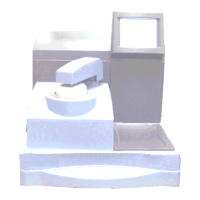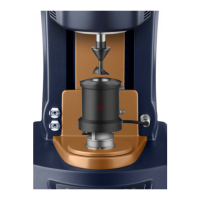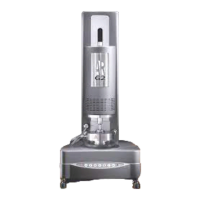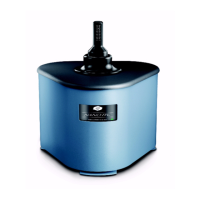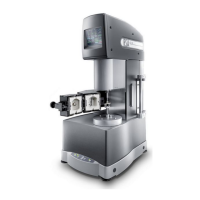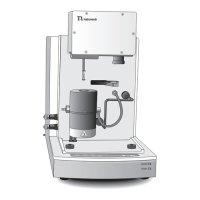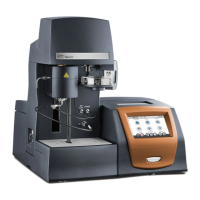DSC Q Series Getting Started Guide
15
respectively. These terms have their largest impact during regions of the thermal curve where the heat capacity
of the sample is the predominant contributor to heat flow. The fourth term accounts for the difference in heating
rate between the sample and reference. This term has its largest impact during enthalpic events (e.g., melting).
This equation can be further modified to account for pan heat flow effects.
TA Instruments supplies the following Q Series DSC's.
• The Q20, Q10, and Auto Q20 instruments provide conventional (single-term) heat flow (commonly
designated as "T1 heat flow") only.
• The Q200 and Q100 provide not only the single-term (T1) heat flow, but also the expanded four-term heat
flow (designated as "T4 heat flow"), which accounts for the cell resistances and capacitances.
• The Q2000 and Q1000 provide T1 and T4 heat flows, as well as a third heat flow (designated as "T4P heat
flow"), which accounts for pan effects.
Cooling Accessories
The DSC operates in conjunction with one of the cooling accessories listed below. Your choice of cooling
accessories depends on the temperature range that you wish to use for your experiments. To install the cooling
accessories, see Chapter 2. For proper operation, the correct cooler type must be selected through the
instrument control software, see the online documentation for details.
Finned Air Cooling System (FACS)
The Finned Air Cooling System (FACS), allows operation from ambient to
725°C, using flowing air as the coolant. For installation instructions see
Chapter 2. You can use the optional quench cool accessory with the FACS
(see next section) if you want to return the temperature of the cell to ambient
more quickly. This cooler is not intended for use at temperatures below
ambient due to the potential for frost formation in the cell.
Quench Cool Accessory for FACS
This accessory is placed inside the FACS and has a reservoir
into which you can place coolant to return the cell to ambient
more quickly. The rate of temperature drop depends on the
coolant used (ice and water, dry ice, or liquid nitrogen).
NOTE: When using the FACS quench cool
accessory make sure that the cooling acces-
sory identified in the instrument control pro-
gram is the FACS and not
the Quench Cooler.
If the wrong cooler is identified your results
will be inaccurate.
Quench Cool
Accessory for FACS
Quench Cooler
Finned Air
Cooling System
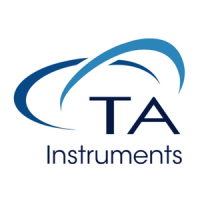
